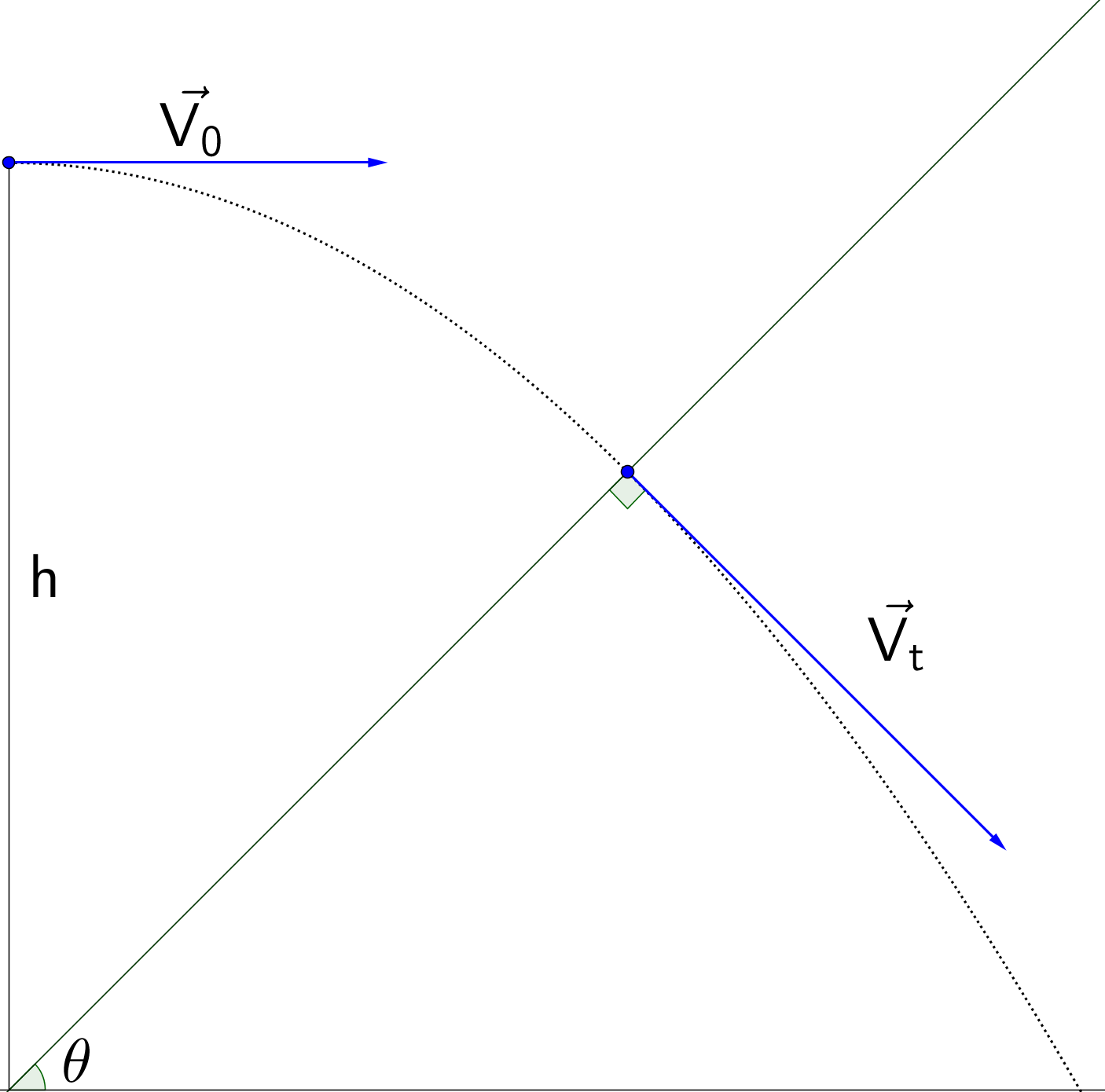Horizontal Shot

A particle is thrown horizontally from a height h with initial velocity V 0 . It hits a plane inclined with an angle θ with respect to the horizontal. What is the value of V 0 such that the particle hits the plane perpendicularly?
This section requires Javascript.
You are seeing this because something didn't load right. We suggest you, (a) try
refreshing the page, (b) enabling javascript if it is disabled on your browser and,
finally, (c)
loading the
non-javascript version of this page
. We're sorry about the hassle.
2 solutions
I agree with you up to 2 g h − V o V o = tan θ But after squaring and grouping you get V o 2 ( 1 + 2 tan 2 θ ) = 2 g h Which is almost obvious to notice that equals V o 2 sec 2 θ ( sin 2 θ + 1 ) = 2 g h Which finally yielss V o = sin 2 θ + 1 cos θ 2 g h
Log in to reply
Maybe you should double check your calculations, particularly "after grouping you get"? I get a different result.
I solved it by changing coordinates and the putting Vx=0.Is this method possible ?
Given parameters g , h , and V 0 , the equation of the trajectory can be described as follows
y = h − 2 1 V 0 2 g x 2
The equation of any normal passing through the trajectory point where x = x 0 is then
g x 0 V 0 2 ( x − x 0 ) + h − 2 1 V 0 2 g x 0 2
where, for this problem, we are looking for the normal that passes through the origin ( 0 , 0 ) , so upon solving, we find that
x 0 = g 2 V 0 g h − V 0 2
So using the original equation for the trajectory, we can find the tangent of the slope as a function of g , h , V 0 , which we shall equate with T a n ( θ )
2 g h − V 0 2 V 0 = T a n ( θ )
Solving for V 0 eventually gets us
V 0 = S i n 2 ( θ ) + 1 S i n ( θ ) 2 g h